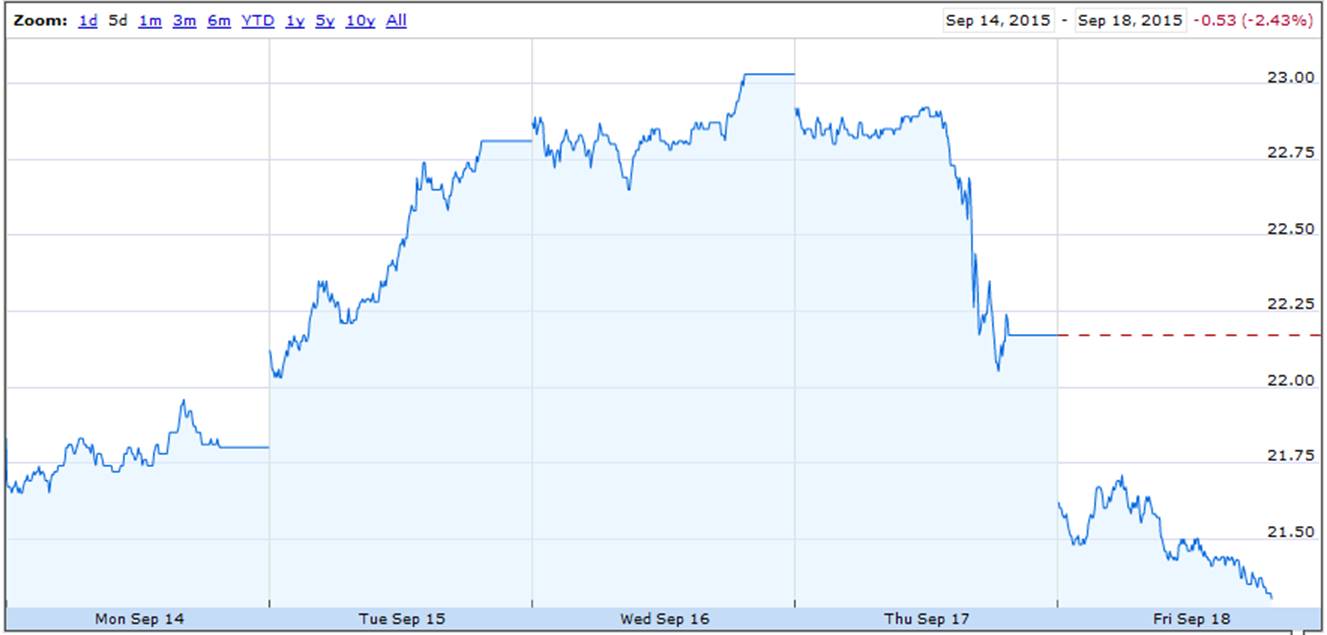

Finance
How Joint Ventures Are Accounted For
Modified: January 15, 2024
Learn how joint ventures are accounted for in the realm of finance and understand the implications for your business. Increase your knowledge in finance today!
(Many of the links in this article redirect to a specific reviewed product. Your purchase of these products through affiliate links helps to generate commission for LiveWell, at no extra cost. Learn more)
Table of Contents
- Introduction
- Definition of Joint Ventures
- Types of Joint Ventures
- Accounting Methods for Joint Ventures
- Equity Method
- Proportional Consolidation Method
- Separate Joint Venture Method
- Initial Recognition of Joint Ventures
- Subsequent Accounting for Joint Ventures
- Reporting Joint Ventures in Financial Statements
- Disclosure Requirements for Joint Ventures
- Conclusion
Introduction
In the world of business, joint ventures have become increasingly common as a means for companies to collaborate and achieve mutually beneficial goals. Whether it’s a strategic partnership between two companies in the same industry or a joint investment venture in a new market, joint ventures offer a way for companies to leverage each other’s strengths and resources.
But what exactly is a joint venture? In simple terms, a joint venture refers to a business arrangement between two or more entities that come together to undertake a specific project or venture. Unlike a merger or acquisition where one company absorbs another, joint ventures allow companies to maintain their independence while working together towards a common objective.
Joint ventures can take various forms depending on the nature of the collaboration. Some joint ventures involve sharing resources and expertise to develop and market a new product or service. Others may involve pooling financial resources to invest in a large-scale project such as infrastructure development or research and development.
Regardless of the type of joint venture, it is important to have a clear understanding of how these partnerships are accounted for. Proper accounting ensures transparency and accurate reporting of the financial performance and position of the joint venture, providing stakeholders with valuable information for decision-making.
In this article, we will explore the different types of joint ventures, the accounting methods used for joint ventures, the initial recognition and subsequent accounting for these ventures, and the disclosure requirements for reporting joint ventures in financial statements. By gaining a comprehensive understanding of how joint ventures are accounted for, businesses can make informed decisions and effectively manage their joint venture partnerships.
Definition of Joint Ventures
A joint venture is a business arrangement between two or more independent entities that collaborate to undertake a specific project or venture. Unlike a merger or acquisition, where one company absorbs another, joint ventures allow participating entities to maintain their autonomy and share the risks, costs, and rewards associated with the venture.
Joint ventures are typically established to capitalize on the strengths and resources of each participating entity. This collaboration allows companies to access new markets, diversify their product offerings, or leverage technical expertise and intellectual property.
Joint ventures can be formed between companies in the same industry or across different industries. They can be local or international in scope, depending on the geographic reach of the project or venture. The legal structure of a joint venture can vary, but it is often governed by a formal agreement that outlines the objectives, roles, and responsibilities of each participating entity.
While joint ventures provide a means for companies to pursue opportunities that may be too costly or risky to undertake alone, they also come with challenges. Effective communication, trust, and alignment of goals are essential for the success of a joint venture. Additionally, navigating potential conflicts of interest and ensuring a fair distribution of profits can be complex tasks in a joint venture arrangement.
It is important to note that joint ventures are distinct from partnerships or strategic alliances, although there may be overlap in the goals and activities of these collaborations. Joint ventures have a defined duration and purpose, with an intention to dissolve or sell the venture’s assets once the project or venture is complete.
In summary, a joint venture is a strategic partnership between two or more independent entities that collaborate on a specific project or venture while maintaining their individual identities. It offers a way for companies to pool resources, share risks and rewards, and achieve common objectives that would be difficult to accomplish alone.
Types of Joint Ventures
Joint ventures can take various forms, depending on the nature of the collaboration and the objectives of the participating entities. Here are some common types of joint ventures:
- Equity Joint Ventures: In an equity joint venture, the participating entities contribute capital and resources to form a new company. Each entity holds a specific percentage of equity in the venture, which determines their rights and responsibilities. The profits, losses, and assets of the joint venture are shared based on the equity ownership.
- Contractual Joint Ventures: Unlike equity joint ventures, contractual joint ventures do not involve the establishment of a separate legal entity. Instead, participating entities enter into a contractual agreement to collaborate on a specific project or venture. This allows for flexibility and ease of exit once the venture is complete.
- Consortium Joint Ventures: Consortium joint ventures involve multiple entities joining forces to pursue a large-scale project, such as infrastructure development or engineering projects. In this type of joint venture, the participating entities pool their resources, expertise, and capabilities to complete the project collectively.
- Strategic Alliance Joint Ventures: Strategic alliance joint ventures are formed when two or more entities come together to combine their strengths and resources to achieve a mutual strategic objective. These joint ventures often focus on areas such as research and development, marketing, or technology transfer.
- Foreign Direct Investment Joint Ventures: In some cases, companies may enter into joint ventures to expand their presence in a foreign market. These joint ventures involve partnering with a local entity to leverage their knowledge of the market, regulatory requirements, and distribution channels.
It is worth noting that these types of joint ventures are not mutually exclusive, and a joint venture can exhibit characteristics of multiple types. The choice of joint venture structure depends on the specific circumstances and objectives of the participating entities.
Understanding the different types of joint ventures is crucial for businesses considering collaboration opportunities. By selecting the most suitable type of joint venture, companies can tailor their partnership to effectively achieve their goals while minimizing risks and maximizing the benefits of collaboration.
Accounting Methods for Joint Ventures
When it comes to accounting for joint ventures, there are three main methods that are commonly used: the equity method, the proportional consolidation method, and the separate joint venture method. Each method has its own set of rules and implications for financial reporting.
- Equity Method: The equity method is the most widely used accounting method for joint ventures. Under this method, the joint venture is treated as an investment, and the investing entity recognizes its share of the joint venture’s assets, liabilities, revenues, and expenses in its financial statements. The initial investment is recorded as an asset, and the investor’s share of the joint venture’s profits or losses is recorded as income or expense. The investor also includes its share of the joint venture’s dividends or distributions as a reduction in the investment.
- Proportional Consolidation Method: The proportional consolidation method is less common and is typically used when the joint venture operates more like a partnership. Under this method, each participating entity combines its proportionate share of the joint venture’s assets, liabilities, revenues, and expenses with those of its own business. The resulting consolidated financial statements reflect the combined financial position and performance of the participating entities and the joint venture.
- Separate Joint Venture Method: The separate joint venture method is used when it is impractical to apply the equity method or the proportional consolidation method. Under this method, each participating entity accounts for its investment in the joint venture separately, without combining the joint venture’s assets, liabilities, revenues, and expenses with its own. The participating entities disclose the joint venture’s financial information, including their investments, in the notes to their financial statements.
The choice of accounting method depends on various factors such as the level of influence or control the participating entity has over the joint venture, the specific accounting standards applicable in the jurisdiction, and industry practices. It is important for companies to carefully evaluate the nature of their joint venture and consult with accounting professionals to determine the appropriate accounting method to use.
It is worth noting that the accounting treatment of joint ventures can have significant impacts on the reporting of financial results and the performance indicators of the participating entities. Proper accounting ensures transparency and provides stakeholders with accurate information to evaluate the financial position and performance of the joint venture and the participating entities.
Understanding the accounting methods for joint ventures is crucial for companies involved in such partnerships. By using the appropriate accounting method, companies can ensure compliance with accounting standards, accurately report their financial results, and provide stakeholders with reliable information for decision-making.
Equity Method
The equity method is a widely used accounting method for joint ventures. Under this method, the investing entity recognizes its share of the joint venture’s assets, liabilities, revenues, and expenses in its financial statements. The equity method is applicable when the investing entity has significant influence over the joint venture but does not have control over its operations.
When applying the equity method, the initial investment in the joint venture is recorded as an asset on the investing entity’s balance sheet. The investment is then adjusted periodically to reflect the changes in the joint venture’s net assets. The investing entity recognizes its share of the joint venture’s profits or losses as income or expense in its income statement.
Under the equity method, the investing entity records its share of the joint venture’s dividends or distributions as a reduction in the investment. This ensures that the investing entity reflects the decrease in its ownership interest in the joint venture.
It is important to note that the investing entity’s share of the joint venture’s assets, liabilities, revenues, and expenses is typically determined based on the ownership interest in the joint venture. If the investing entity holds a 50% ownership interest, for example, it would recognize 50% of the joint venture’s results in its financial statements.
The equity method provides a comprehensive view of the investing entity’s involvement in the joint venture. It allows for the recognition of the financial performance and position of the joint venture in the investing entity’s financial statements while maintaining the independence of the joint venture as a separate legal entity.
It is worth mentioning that the application of the equity method requires periodic assessments of the investing entity’s continued significant influence over the joint venture. If the level of influence changes, such as a decrease or increase in ownership interest, it may result in a change in the accounting treatment.
Overall, the equity method is an important accounting method for joint ventures as it allows for the recognition of the investing entity’s share in the joint venture’s financial results. By using the equity method, companies can accurately report their investments in joint ventures and provide stakeholders with transparent information about their involvement in these collaborative partnerships.
Proportional Consolidation Method
The proportional consolidation method is another accounting method used for joint ventures, albeit less commonly employed compared to the equity method. The proportional consolidation method is applicable when the joint venture operates more like a partnership, and each participating entity combines its proportionate share of the joint venture’s assets, liabilities, revenues, and expenses with those of its own business.
Under the proportional consolidation method, the participating entities recognize their proportional ownership interest in the joint venture and combine it with their individual financial statements. The combined financial statements reflect the consolidated financial position and performance of both the participating entities and the joint venture.
When applying the proportional consolidation method, each participating entity combines its share of the joint venture’s assets, liabilities, revenues, and expenses with its own financial statements. The joint venture’s financial results are added to the respective line items of the participating entities’ financial statements, based on their ownership proportion.
For example, if the joint venture generates $1 million in revenues and Entity A has a 60% ownership interest, Entity A would recognize $600,000 ($1 million x 60%) as its share of the joint venture’s revenues in its own income statement.
It is important to note that the proportional consolidation method requires consistent accounting policies among the participating entities. This ensures that the financial statements accurately reflect the combined financial position and performance of the entities and the joint venture.
While the proportional consolidation method provides a comprehensive view of the participating entities’ involvement in the joint venture, it is worth mentioning that this method has limitations. It does not reflect the specific financial results and position of the joint venture as a separate legal entity. Instead, it combines the joint venture’s results with those of the participating entities, potentially obscuring the true financial performance of the joint venture.
Due to its complexities and limitations, the proportional consolidation method is less commonly used today, particularly with the adoption of more stringent accounting standards. Nonetheless, in certain jurisdictions or industries where the proportional consolidation method is required or preferred, companies may still use this method to report their joint venture partnerships.
In summary, the proportional consolidation method is an accounting method used for joint ventures that operate more like partnerships. By combining the participating entities’ proportional shares of the joint venture’s financial results with their individual financial statements, the proportional consolidation method provides a consolidated view of the entities’ financial performance while recognizing their joint venture involvement.
Separate Joint Venture Method
The separate joint venture method is an accounting method used when it is impractical to apply the equity method or the proportional consolidation method for joint ventures. Under this method, each participating entity accounts for its investment in the joint venture separately, without combining the joint venture’s assets, liabilities, revenues, and expenses with its own.
When using the separate joint venture method, each participating entity recognizes its investment in the joint venture as a line item in its own financial statements. The investment is initially recorded at cost and adjusted periodically to reflect any changes, such as additional investments, changes in shareholding percentages, and dividends or distributions received from the joint venture.
The separate joint venture method also requires the participating entities to disclose the financial information of the joint venture in the notes to their financial statements. This includes information about the joint venture’s assets, liabilities, revenues, expenses, and the participating entities’ share of profits or losses.
By using the separate joint venture method, participating entities can maintain the independent reporting of their financial results while providing stakeholders with transparency regarding their investments in joint ventures.
It is important to note that using the separate joint venture method may result in limited information about the financial performance and position of the joint venture itself. Stakeholders may need to consider the separate financial statements of each participating entity and the additional information disclosed in the notes to gain a comprehensive understanding of the joint venture.
The separate joint venture method may be used in situations where the joint venture is of lesser significance to the participating entity or when applying the equity method or the proportional consolidation method is not feasible due to various reasons, such as the inability to obtain necessary financial data or the lack of control or influence over the joint venture.
It’s worth noting that in recent years, there has been a shift towards using the equity method as the preferred accounting method for joint ventures, as it provides more detailed information about the investing entity’s involvement in the joint venture.
In summary, the separate joint venture method is an accounting method used for joint ventures when applying the equity method or the proportional consolidation method is not practical. Participating entities account for their investment in the joint venture separately and disclose relevant information about the joint venture in the notes to their financial statements.
Initial Recognition of Joint Ventures
The initial recognition of joint ventures involves recording the investment made by participating entities in the joint venture on their respective balance sheets. This initial recognition marks the beginning of the joint venture partnership and sets the foundation for subsequent accounting and reporting.
When participating in a joint venture, each entity recognizes its contribution to the joint venture as an investment. The investment is recorded as an asset on the balance sheet, reflecting the value of the resources, cash, or other assets contributed to the joint venture.
The initial recognition of the joint venture investment is typically recorded at fair value, which represents the price that would be received to sell the investment or paid to transfer the liability in an orderly transaction between market participants at the measurement date.
The fair value of the investment may be determined based on market prices, valuation techniques, or other relevant factors, depending on the nature of the assets contributed. It is important to use appropriate valuation methodologies and obtain reliable inputs to ensure accuracy and reliability in the initial recognition of the joint venture investment.
Additionally, any liabilities incurred by the participating entities as a result of their involvement in the joint venture, such as guarantees or commitments, should also be recognized and recorded on the balance sheet.
It is worth noting that the recognition of the joint venture investment should comply with the applicable accounting standards and regulations. These standards provide guidance on the measurement and recognition criteria for the initial recognition of joint ventures.
Proper documentation and disclosure are essential during the initial recognition of joint ventures. Participating entities should maintain records of the investments made, including the terms, conditions, and ownership interests in the joint venture. These records serve as evidence and support for the subsequent accounting and reporting of the joint venture.
In summary, the initial recognition of joint ventures involves recording the investment made by participating entities on their balance sheets. The investment is recognized as an asset, reflecting the value of the resources contributed to the joint venture. It is important to adhere to accounting standards and regulations and maintain proper documentation and disclosure during this initial recognition process.
Subsequent Accounting for Joint Ventures
After the initial recognition of joint ventures, participating entities must continue to account for their investments and the financial results of the joint venture in their financial statements. This subsequent accounting ensures accurate reporting of the ongoing performance and financial position of the joint venture.
Under the equity method of accounting, which is the most commonly used method for joint ventures, participating entities recognize their share of the joint venture’s profits or losses in their income statements. The equity method requires periodic adjustments to reflect changes in the joint venture’s net assets and the participating entities’ ownership interest.
These adjustments include recognizing the participating entities’ share of the joint venture’s revenues and expenses, as well as any dividends or distributions received. The investing entity’s equity account is adjusted accordingly to reflect changes in its ownership interest in the joint venture.
For example, if the joint venture generates $1 million in profits and the investing entity holds a 40% ownership interest, the investing entity would recognize $400,000 ($1 million x 40%) as its share of the joint venture’s profits in its income statement.
It is essential for participating entities to maintain accurate records and communication with the joint venture to ensure the timely recognition of profits, losses, and any other changes affecting the investment. These records also help in determining the carrying value of the investment on the balance sheet.
In addition to the equity method, other subsequent accounting methods, such as the proportional consolidation method or the separate joint venture method, may be used depending on the circumstances and accounting standards applicable in each jurisdiction.
Regardless of the accounting method used, participating entities should regularly assess the carrying value of their investment in the joint venture for any indicators of impairment. If there is evidence of a significant and prolonged decline in the value of the investment, appropriate impairment tests and adjustments should be made.
It is also important for participating entities to disclose relevant information about their joint venture investments in the notes to their financial statements. This includes providing details about the joint venture’s financial performance, strategic significance, and any potential risks or uncertainties associated with the joint venture partnership.
By engaging in proper subsequent accounting for joint ventures, participating entities can accurately report the financial results and position of their investments in the joint venture. This ensures transparency and provides stakeholders with valuable information for decision-making and assessing the performance of the joint venture and the participating entities.
Reporting Joint Ventures in Financial Statements
Reporting joint ventures in financial statements is an essential aspect of accounting for these collaborative partnerships. Participating entities are required to disclose relevant information to provide stakeholders with a comprehensive understanding of their joint venture investments.
When reporting joint ventures in financial statements, participating entities should consider the accounting standards and regulations applicable in their jurisdiction. These standards provide specific guidance on the presentation and disclosure requirements for joint ventures.
The financial statements should include clear and concise information about the nature and significance of the joint venture partnership. This includes disclosing the names of the joint venture, the legal structure, the participating entities, and the purpose of the joint venture.
The financial statements should also provide details about the participating entities’ investments in the joint venture. This includes the carrying value of the investment, the ownership interest percentage, any changes in ownership during the reporting period, and the method of accounting applied (e.g., equity method).
Furthermore, participating entities should disclose their share of the joint venture’s financial results in their respective financial statements. This includes disclosing their share of the joint venture’s revenues, expenses, and any dividends or distributions received.
In addition to the primary financial statements, participating entities should provide comprehensive and transparent notes to the financial statements. These notes should include information about the joint venture’s significant accounting policies, any contingent liabilities or commitments related to the joint venture, and any material risks or uncertainties associated with the joint venture.
It is also important to disclose any significant related-party transactions between the participating entities and the joint venture. This ensures transparency and helps stakeholders identify any potential conflicts of interest or special considerations that may impact the financial results or the fair treatment of all parties involved.
Participating entities should consider the materiality and relevance of information disclosed in their financial statements. The information provided should be sufficient to enable stakeholders, such as investors, lenders, and analysts, to assess the financial performance, position, and risks associated with the joint venture partnership.
By reporting joint ventures in financial statements with accuracy and transparency, participating entities demonstrate their commitment to providing stakeholders with reliable and meaningful information about their joint venture investments. This enables stakeholders to make informed decisions and evaluations regarding the financial health and prospects of the joint venture and the participating entities.
Disclosure Requirements for Joint Ventures
Disclosure requirements play a vital role in ensuring transparency and providing stakeholders with relevant information about joint ventures. Companies engaging in joint venture partnerships are required to fulfill certain disclosure obligations to facilitate a comprehensive understanding of the joint venture’s financial performance, risks, and impact on the participating entities.
When it comes to disclosure requirements for joint ventures, participating entities should adhere to the applicable accounting standards and regulations in their jurisdiction. These standards provide guidance on the specific information that needs to be disclosed in the financial statements and accompanying notes.
Some common disclosure requirements for joint ventures include:
- Description of the Joint Venture: Participating entities should disclose the name, legal structure, purpose, and duration of the joint venture. This helps stakeholders understand the nature and objectives of the joint venture partnership.
- Ownership and Voting Interests: Entities should disclose their ownership percentage, share of voting rights, and any significant changes in ownership during the reporting period. This information is essential for assessing the participating entities’ level of control and influence over the joint venture.
- Method of Accounting Applied: Companies should disclose the accounting method used to account for the joint venture, such as the equity method, proportional consolidation method, or separate joint venture method. This helps stakeholders understand the basis of accounting applied and its impact on the financial statements.
- Financial Results: Participating entities should disclose their share of the joint venture’s revenues, expenses, and any dividends or distributions received from the joint venture. This allows stakeholders to evaluate the financial performance and contributions of the joint venture to the participating entities.
- Significant Judgments and Estimates: Companies should disclose any significant judgments, assumptions, or estimates made in the accounting for the joint venture. This helps stakeholders understand the level of subjectivity involved in the financial reporting and the potential impact on the reported results.
- Risks and Uncertainties: Entities should disclose any material risks and uncertainties associated with the joint venture, such as regulatory, market, or operational risks. This information helps stakeholders assess the potential impact of these risks on the financial position and performance of the participating entities.
- Related-Party Transactions: Companies should disclose any significant related-party transactions between the participating entities and the joint venture. This ensures transparency and helps stakeholders identify any potential conflicts of interest or special considerations that may impact the fairness of the financial reporting.
- Commitments and Contingencies: Participating entities should disclose any significant commitments or contingencies related to the joint venture, such as guarantees or contingencies arising from legal disputes. This information enables stakeholders to assess the potential financial obligations and risks associated with the joint venture partnership.
It is crucial for companies to provide comprehensive and meaningful disclosures that are relevant to the joint venture’s financial performance and the interests of stakeholders. Adequate disclosures promote transparency, enhance decision-making, and foster confidence in the financial reporting of the joint venture and the participating entities.
Conclusion
Joint ventures have become an increasingly common strategy for businesses to collaborate, leverage resources, and achieve mutual goals. Understanding how joint ventures are accounted for is crucial for accurate financial reporting and providing stakeholders with valuable information.
In this article, we explored the definition of joint ventures and the various types of joint ventures that companies can engage in. We discussed the three main accounting methods for joint ventures: the equity method, the proportional consolidation method, and the separate joint venture method. Each method has its own implications and requirements for financial reporting.
We also examined the initial recognition of joint ventures, where participating entities record their investments in the joint venture on their balance sheets. Subsequent accounting for joint ventures involves recognizing the financial results of the joint venture in the participating entities’ income statements, as well as periodic adjustments to reflect changes in ownership interest.
Reporting joint ventures in financial statements necessitates compliance with disclosure requirements. Participating entities should provide comprehensive information about the joint venture, its financial results, ownership interests, and significant risks and uncertainties. Transparent and meaningful disclosures enable stakeholders to evaluate the impact of the joint venture partnership on the participating entities and make informed decisions.
Overall, understanding the accounting methods and reporting requirements for joint ventures is essential for businesses engaged in these collaborative partnerships. By adhering to accounting standards, accurately recognizing investments, and providing transparent disclosures, companies can effectively communicate the financial performance, position, and risks associated with their joint venture investments.
As joint ventures continue to play a significant role in business partnerships, companies must prioritize proper accounting and reporting to ensure transparency, accountability, and the ability to make informed strategic decisions.














